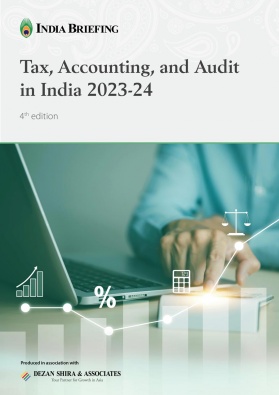Long-Term vs Short-Term FD: How to Choose Your FD Account Duration
Sponsored Post
When planning your investments, it is essential to have options that offer stability and security in your portfolio. You can get these benefits and more by opening a fixed deposit account. As a low-risk avenue, FDs are a popular option for varied types of investors.
You can also maximize your returns by implementing techniques like laddering or choosing a cumulative FD that leverages the powers of compounding. You can also select between two types of fixed deposit tenors – short and long. These tenors are categorized based on your chosen investment term.
Both these tenors have their advantages and features. Before you open a long- or short-term FD, understanding the difference between the two is crucial to ensure you choose the right one.
Read on to learn the difference between a short-term and long-term FD, their advantages, and tips to choose between them.
What are short-term and long-term fixed deposits?
Short-term fixed deposits are investments in which you deposit funds with an issuer for a minimum period of 7 days. The maximum tenor for a short-term FD is typically 2 years. Given this, a short-term deposit is appropriate if you want to grow your corpus quickly.
On the other hand, long-term fixed deposits are where you invest funds for more than 2 years. The average duration of a long-term FD is 5 years, and the maximum investment period is 10 years.
In both these FDs, you earn returns in the form of interest. You can choose either periodic interest payouts or receive the accumulated interest along with your invested funds when your fixed deposit matures.
Advantages of investing in short-term fixed deposits
Here are some benefits of investing in a short-term FD that you should consider:
Short-term savings
With short-term fixed deposits, you can invest small or large amounts for short periods. This fixed deposit account is an excellent option to accomplish a short-term goal, like saving up for a trip, financing a bike, and more. It generally serves you well if you want to address a financial need that is right around the corner.
Higher flexibility
As mentioned, in a short-term FD, you invest for a shorter period. This period typically ranges between a few days or months, meaning you do not need to deposit your funds for many years. This gives you greater flexibility to access your money when needed, thereby increasing your liquidity.
It also helps you avoid prematurely withdrawing your funds, as the deposit has a shorter maturity period. You can then use the accumulated corpus to cover your expenses. Moreover, if you do make a premature withdrawal, the penalty may be lesser as the tenor is shorter.
Higher interest rates than savings account
Another reason for investing in a short-term fixed deposit is that it offers a more favourable interest rate than depositing your money in a savings account. If you have idle funds in your savings account, transferring them to a short-term fixed deposit account can be a smart financial decision. This can allow you to potentially increase your earnings.
Advantages of investing in long-term fixed deposits
Check out some benefits of investing in long-term fixed deposits.
Long-term financial goals
Long-term fixed deposits are ideal for meeting your non-immediate objectives. Since you generally invest for 5 years to 10 years, you enjoy the power of compounding and earn better returns than short-term fixed deposits.
These fixed deposits are best for future goals like paying for your child’s education, financing a wedding, accumulating your retirement corpus, and more.
Competitive interest rates
Certain long-term FD tenors can offer higher interest rates than short-term tenors. Since FD interest rates directly impact your returns, a higher rate can mean higher returns. As such, this type of fixed deposit account can be ideal for financial growth and wealth accumulation.
Loan against FD facility
Another significant benefit of investing in a long-term fixed deposit is getting a secured loan by putting up your fixed deposit as collateral. While this is also available in a short-term FD, it becomes more beneficial in the long-term FD as you can get a longer repayment tenor.
In a loan against FD, the repayment tenor is generally till the end of your investment tenor. This means that if you have a 6-year FD and take a loan in the 2nd year, you can get a repayment period of up to 4 years. However, if you have a 3-year FD, a loan in the 2nd year may result in a repayment period of only up to 1 year.
As such, a loan against a long-term fixed deposit account may give you better and more flexible access to funds to cover unexpected expenses. Additionally, you can easily pledge your FD as security and get a credit card against it, increasing your credit limit without any hassles.
Tips to choose between long- and short-term fixed deposits
To choose the best investment period, consider your financial standing, risk appetite and goals.
A short-term FD can offer better liquidity. As such, it can be a suitable option for those with a shorter investment horizon and low risk preferences. Moreover, some issuers offer a higher interest rate for some special tenors.
Sometimes, these rates may be even higher than a long-term fixed deposit account. This can give a significant boost to your returns. So, if you have some flexibility, you can choose a special tenor and get better returns.
On the other hand, a long-term FD offers the power of compounding and long-term wealth generation. This makes it an attractive option for goals that are not in the near future. However, these long-term options may lack liquidity and flexibility.
So, you should invest in long-term fixed deposits if you can commit to depositing your funds for a long period. Staying invested continually is crucial because you can avoid premature withdrawal penalties and get the continued benefit of compounding.
As you can see, both short-term and long-term fixed deposit accounts have their own benefits. When it comes to choosing one, there is no one-size-fits-all option. So, consider the above points to choose the right term for your deposit.
While choosing the right tenor is important, choosing the right issuer is equally important, as the interest rates vary across issuers. You can use an FD calculator to compare which long- or short-term FD issuer offers the best returns and make a smart decision.
- Previous Article Recruiting in India: Key Considerations for Foreign Companies
- Next Article Visa Clearance Streamlined by Indian Authorities for Chinese Professionals Engaged in PLI Sectors







